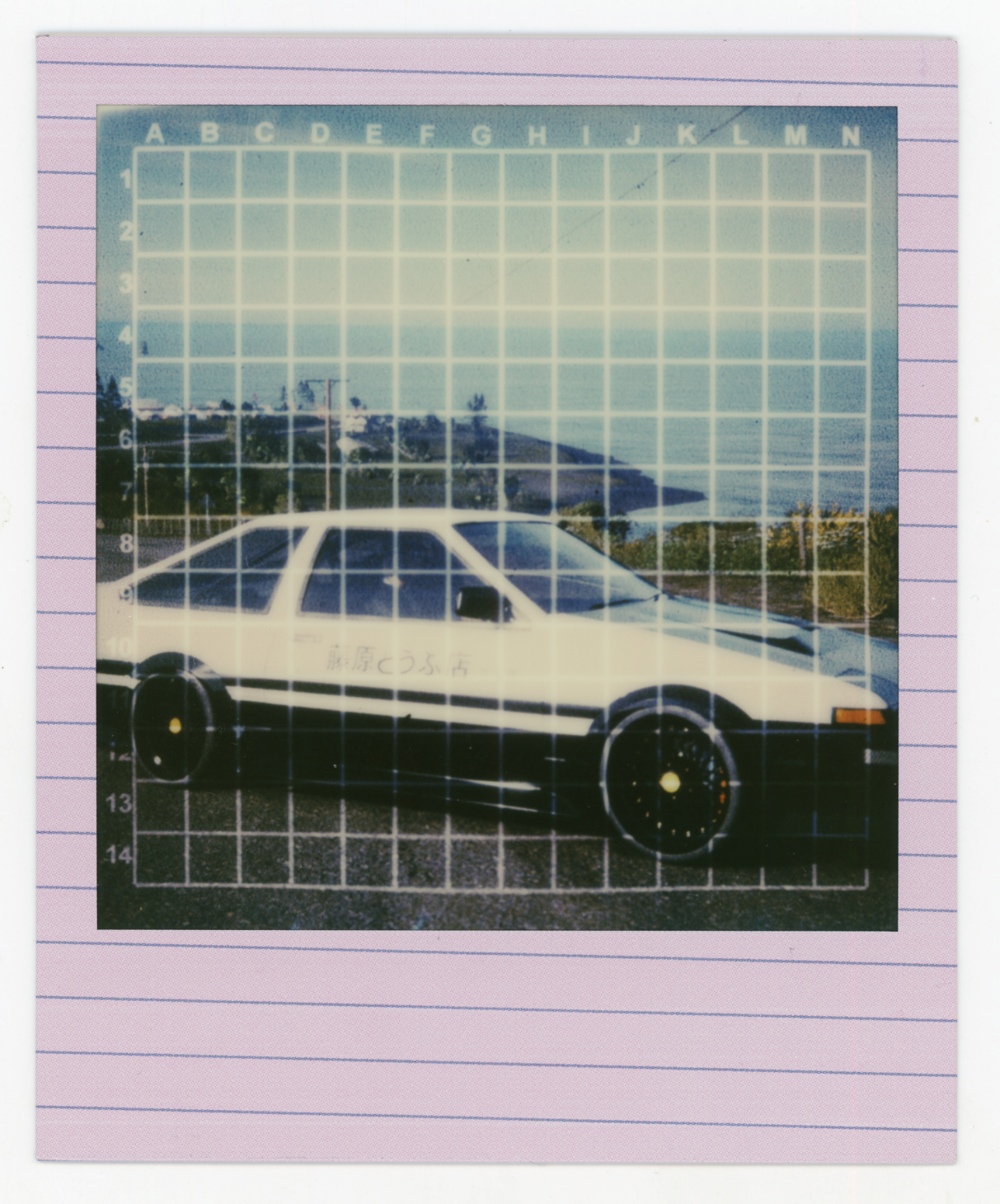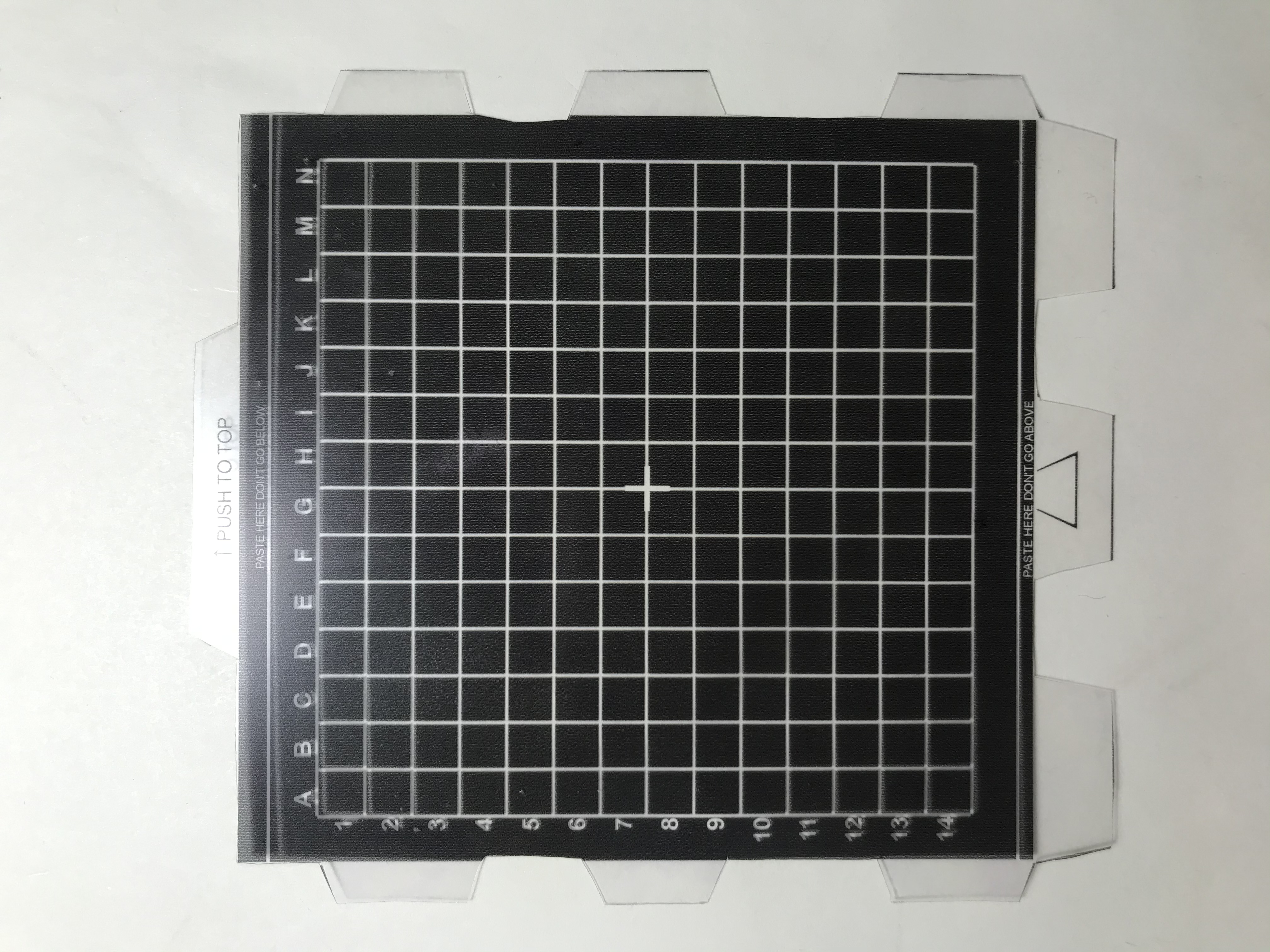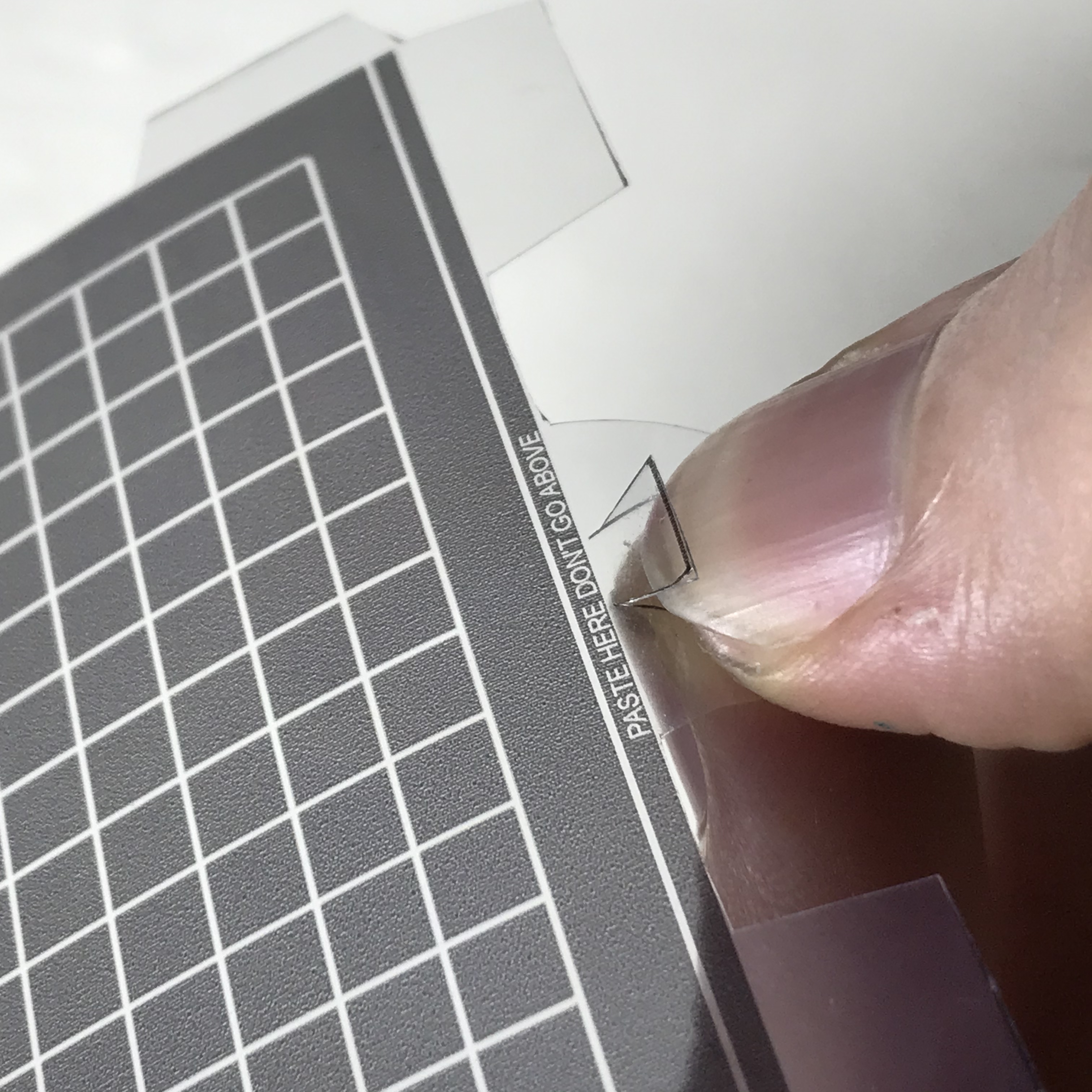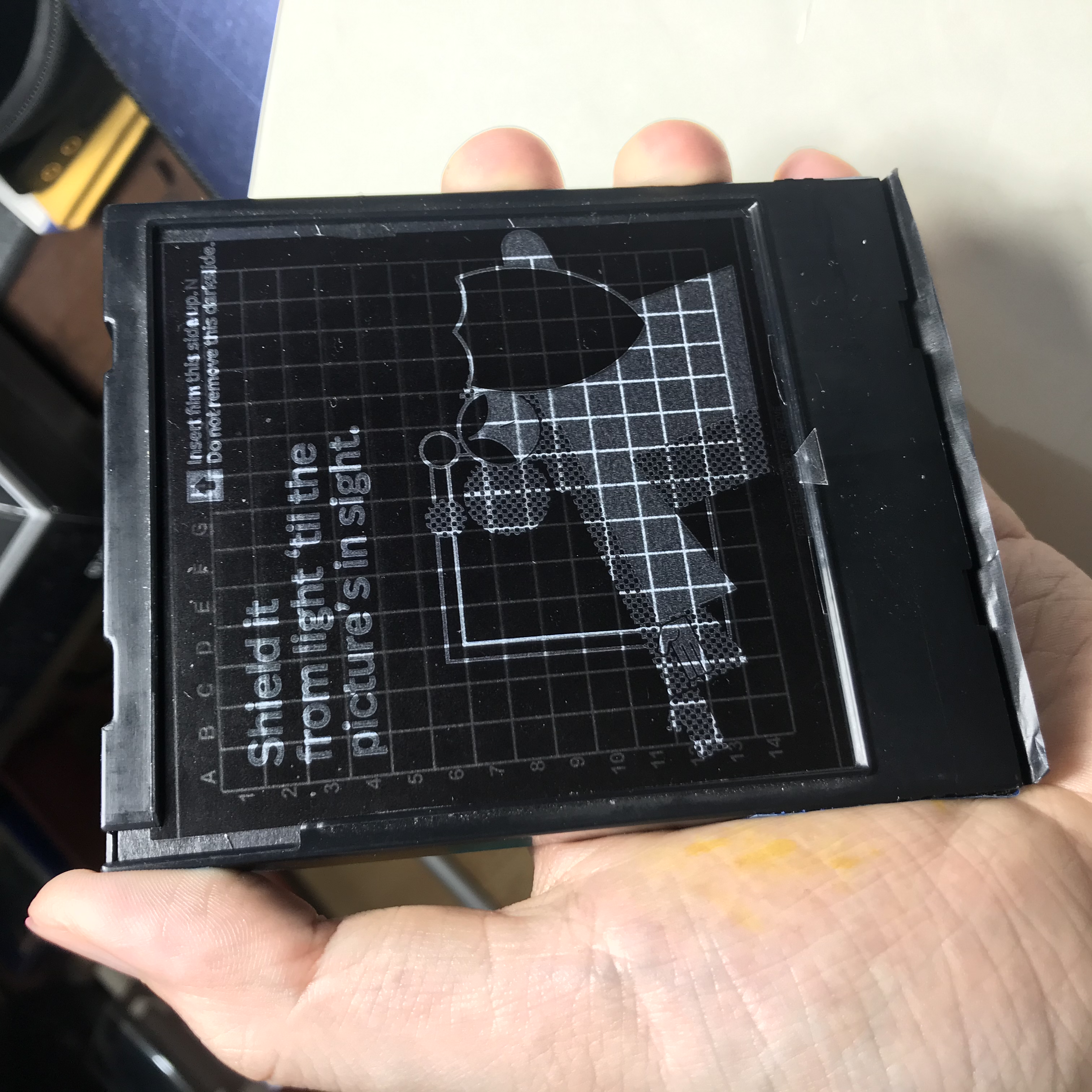600grid filter is another experimental result of Pola.fun since it’s birth.
On http://pola.fun/600grid/, you may find the 600grid files that we provided. The final image result is like this:

For years, Polaroid lovers could not resist the charm of the original Spectra Grid Film. However due to the lack of reproduction, and even the Polaroid Originals has stopped to produce Spectra films, we decided to make a grid filter for 600 films. Providing the original charm with our own solution.
How to use:
- Choose to download the correct file for your own printer.
- Buy correct transparent printing films for your printer. It depends on if the printer is a laser one or a ink-jet one. Due to technology differences, you need to buy the matching type of films to get your expected result. Otherwise it simply won’t work fine.
- Print the correct PDF file.
- Crop along the white lines,as the following picture showed:

5. Carefully crop the little notch out as the following picture:

- Insert the film into the cartridge like this:

- Be careful! Make sure both the “DONT’T GO ABOVE” & the “DON’T GO BELOW” sign were visible inside the window of the cartridge. Make sure the little notch/clip is outside the window.
- Make sure the filter is flat by doing some small adjustments. Do not use too much force otherwise you might cause a light leak to your films.
Guides on shooting:
- Ink-Jet printed filters,are almost the same with an ND4 filter. It would reduce the exposure for about 2 stops (-2EV measured by my light meter). Thus for 600 series cameras( SLR 670 680 690, One 600, and 600 box cameras ),you need to compensate the exposure for 2 – 3 steps* to shoot normally. Every printer has a difference on its printing results, and every Polaroid camera might have a difference on their light measuring circuits, thus you might need to find your own best exposure settings. The recommendations here are only provided for a brief reference.
- Ink-Jet printed filters theoretically can be paired with 600 film & SX-70 cameras directly, without any other modifications. Which means you don’t need another ND filter or another camera mod. However if you have modded your SX-70 to use 600 films directly, you would need to compensate the exposure, or remove your camera mod.
- Laser printed filters are generally equal to an ND2 filter, which would reduce the exposure by 1 stop. Thus for 600 cameras you would need to compensate 1-2 steps* to get correct exposure. Again, due to the differences between printers and cameras, you might need to find your own best exposure settings. The recommendations provided here are only provided for a brief reference.
- For SX-70 cameras, using the Laser printed filter, you might need to reduce 1-2 steps of exposure.
- Remember to adjust your settings accordingly.
- An easy and fast method to find the possible best exposure setting, is to use your Polaroid camera to shoot something showing on your computer monitor or tablet PC’s screens, with the filter mounted on. You need to show a naturally exposed picture (like bliss.jpg ) on full screen, and then use your camera to shoot that. If the result is darker than the image shown on screen, then you need to lighten your exposure, and vice versa. It takes at most of 2 or 3 times of testing to find a very optimal exposure setting using this method.
- Please keep your best exposure setting in mind, since it really helps 🙂